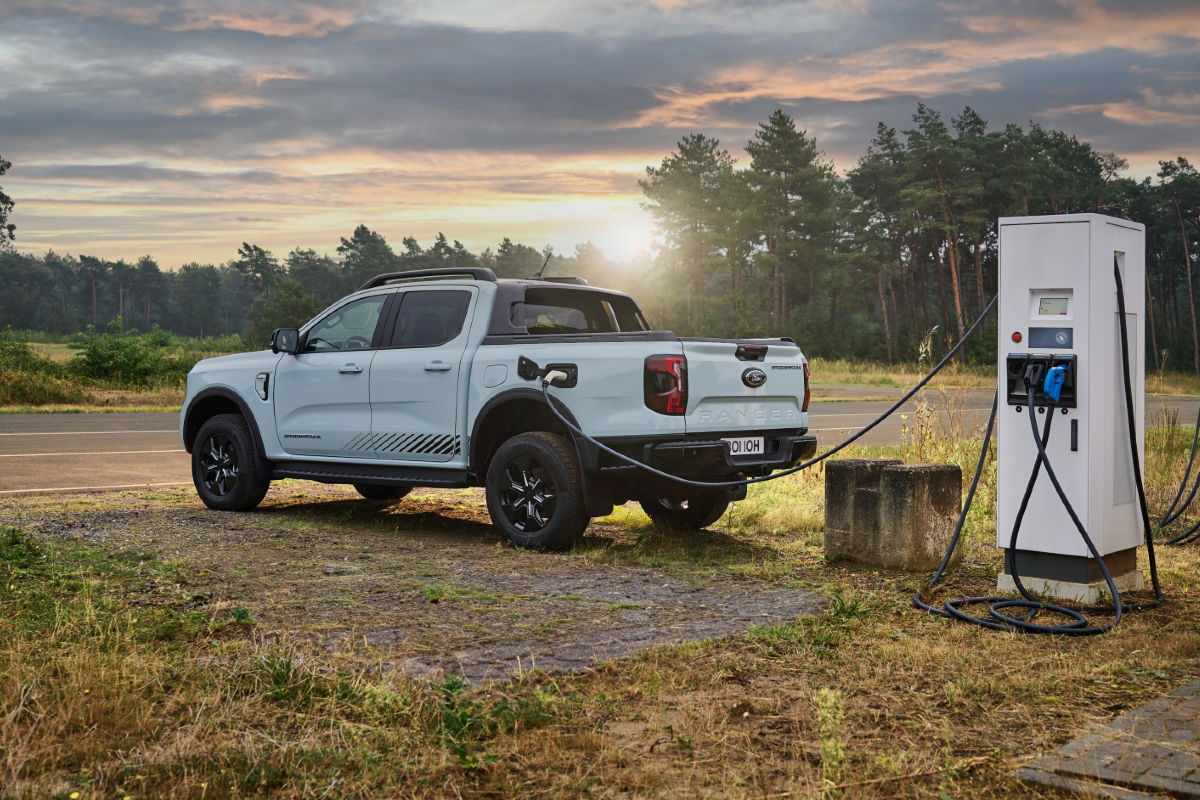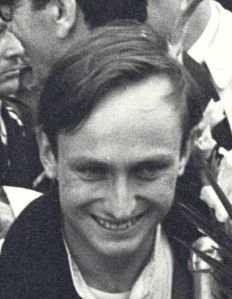

New Zealand’s Chris Amon started serious racing in 1962 and the following year re-located to England. He quickly snapped up a Formula One drive and became a Sports cars star when he won the 1966 24-Hours of Le Mans race paired with Bruce McLaren.
With backing from Reg Parnell, a former F1 driver and team manger, Amon was invited to go over to Europe and started racing with Reg Parnell Racing.
Amon admitted that a long Formula One career was not on his radar at the time.
“I didn’t have any structure when it came to my career so a long and successful Formula One career wasn’t my goal, I went over thinking to have one season in Europe would be absolutely brilliant,” explained Chris Amon to Speedcafe.com
“As I left New Zealand I thought it was really a one season opportunity. It was a large step into the unknown.
“To a degree it was a year away from farming.
“Having been there for a few races I started thinking about the following year. Fourteen years later I came home.”
Amon’s first Grand Prix was at Monaco,but he was a DNS (Did Not Start) because his team mate Maurice Trintignant took over his Lola Mk4A after the Italian’s car suffered with a mechanical issue. His debut Grand Prix might not have been a fairytale, but that season was memorable nonetheless.
“I did a couple of non-championship races prior to Monaco, at Goodwood and maybe Silverstone,” said Amon.
“I’d had a taste of Formula One, so to arrive at Monaco, this famous place called Monaco, with the magic of the place, was awe inspiring.
“During that first year there were times that I had to pinch myself, the fact that I was there and doing what I was doing was amazing.”
After 1963, Amon maintained his seat at Reg Parnell Racing and well and truly extended his Formula One career past one season.
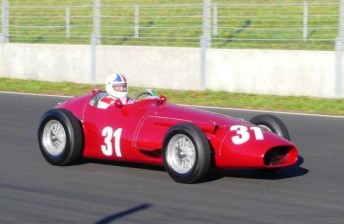
Having completed in the 1964 pre-season races, Amon failed to qualify at the season opener in Monaco but made up for that at the next event in Holland, earning his first World Championship points when he finished fifth.
After this there was not much joy for Amon. He accepted a drive with fellow Kiwi Bruce McLaren, which saw him drive CanAm, and the 1966 season was lean when it came to F1, but winning the Le Mans race caught the eye of non other than Enzo Ferrari himself.
“Ferrari’s interest in me was partly a result of the Le Mans win,” said Amon.
“Ferrari had parted company with (John) Surtees through 1966 and he had (Lorenzo) Bandini, (Mike) Parkes and (Ludovico) Scarfiotti. Bandini was a Formula One driver while Scarfiotti and Parkes were Sports car drivers, so I think he was looking for a fourth person to drive Sports cars.
“I’ve learned in recent times that he was wanting a younger person to mould into a Formula One driver and the win at Le Mans put me out the front.”
Amon was racing in the CanAm Series with McLaren at Watkins Glenn when approached by Ferrari.
“I will always remember this, I was standing in the lobby at the hotel on the Saturday morning and the Shell Motorsport and Formula One boss came up to me and asked if he could have a word with me,” said Amon.
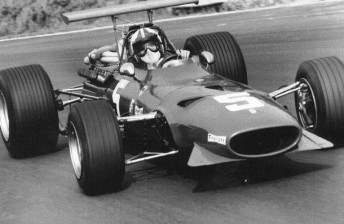
“He asked if I would be able to come to Italy with him on Monday because Mr Ferrari would like to speak to me. I was completely blown away obviously.
“So I flew out of New York on the Monday night and met with Ferrari on Tuesday morning at Maranello.
“It took 15 minutes and I signed a contract, the contract negotiations weren’t very long (laughing).
“I then had the task to tell Bruce (McLaren) that I signed with Ferrari. He was disappointed because his F1 thing was coming together and he wanted me to be a part of that.
“The opportunity to drive for this magical Ferrari team was too much.”
Moving to Ferrari proved a success. In 1967 he finished fourth in the championship with four podiums but had to contend with the death of Bandini at Monaco and Parkes broke both his legs in Belgium.
“From a racing point of view it was a good season,” said Amon.
“It was a lot of fun but the car in ‘67 was unfortunately not on par power wise with the Brabham.
“I thought I’d have the most powerful engine at Ferrari and it was anything but, but I had some good races for thirds and fourths.
“I also should have won at Mexico but ran out of fuel on the last lap.”
If 1967 was a good year, 1968 should have been better. If not for constant mechanical issues, Amon believes he could have won the title.
“I had pole three times and should have won several races,” said Amon.
“If I’d done that I could have won the championship.
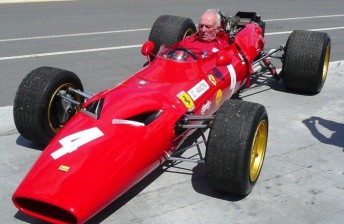
“I just didn’t finish races and finished 10th (overall). We were in a position to win in 1968.”
Amon’s last year with Ferrari was “very frustrating”. The team went the wrong way with the engine and the car was becoming less competitive.
“I remember the Spanish Grand Prix, I was leading by half a minute and the engine blew up,” said Amon.
“I started on the front row at Monaco and the gear box broke.
“After the British GP they worked on the new car for Monza. I said to Ferrari that we should scrub the next two GPs and put all of our efforts into the new car which he agreed on.”
The new car was tested prior to Monza but Amon was convinced it would be uncompetitive and decided to leave Ferrari for the March Engineering team.
“Every time I drove it something broke or there was an engine problem,” said Amon of the new Ferrari.
“In October, before I signed the contract for the following year, I was approached by March and I was so frustrated I said to Ferrari that I couldn’t go through another year like this.
“He released me and of course that it was the biggest mistake of my life.”
With Amon at March, the new Ferrari started to win by the middle of the 1970 season.
“I regret leaving Ferrari,” said Amon.
“By mid-1970 the new Ferrari was starting to win and continued to do so on and off for the next three years.
“I really shot myself in the foot. I remember (Enzo) Ferrari saying that he’d win a race before me.
“He wasn’t quite right as I’d won the Silverstone non-championship race, but he was winning by mid -season.”
At March, Max Mosley’s team, he started the season off poorly, retiring in four of the first five races, but after Belgium, where he finished second, the season picked up. He finished eighth in the championship, securing three podiums and was never out of the top 10.
Unreliability saw Amon move on and jump from team to team over the final six seasons of his career. He scored the fifth and final pole of his career at France in 1972, where his third place was his last of 11 podiums.
He also started his own team in time for the 1974 season, but Chris Amon Racing didn’t last out the season.
“This was a move out of frustration,” said Amon.
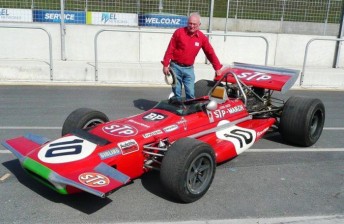
“1973 was a disaster and I think had I not been committed to doing my own thing I probably could have been with Tyrrell or Brabham for 1974.
“By then though, I was too far down the track with my own thing. It was simply frustration at the lack of results.”
By the end of 1976, even though Amon could have raced the following year, he decided to retire from racing.
“I’d really had enough of the way of life, my family were back in NZ and in those days I only got home once a year,” said Amon.
“I’d just had enough.
“I never regretted stoping when I did. I was 32/33 and still young enough to start another career.
“Sure, there were moments where I missed it, but I never regretted stoping when I did.”
Amon didn’t do much racing after he retired, one of the few events he did and enjoyed was the Targa New Zealand in 2003, where he was joined by Murray Walker.
Other than that, Amon has maintained a strong relationship with Toyota over the past 28 years, working with the Japanese manufacturer on car design, development and marketing.
On retiring, Amon retreated back to the family farm in New Zealand. He only sold this a few years ago and enjoys some sailing and golf and still does some evaluation work with Toyota.
When Amon looks back at his career he is not only happy to have enjoyed his time overseas racing, but is thrilled that he is still around.
“I think the fact that I fulfilled what had become a boyhood ambition to race in a very minor way, and to have it evolve like it did, is probably what I enjoyed the most,” said Amon.
“The fact that I could have and probably should have had more success than I did leaves a dampener on things but as the years go by it becomes a case of you remembering the good times and forgetting the bad ones.
“I certainly don’t look back with a sense of overall frustration.
“A lot have said I was desperately unlucky; my response to that these days is that I am bloody lucky to be here because so many of the lucky ones aren’t.
“I can be very thankful; I had a good career and am thankful for everything I got.”
Amon is a big fan of V8s, he enjoys the fact that it is increasingly professional and the racing is strong and that it lacks the sophistication and clinical nature of Formula One.
As for Formula One, he believes that Mark Webber still has a chance to win the world title, but Sebastian Vettel is being favoured. He’d like to see Webber go to Ferrari, if the opportunity presented.
“(Webber) is certainly good enough to win a championship but it might be good that he go someone else,” said Amon.
“Ferrari would be marvellous if he could do that.
“Personally I question whether Massa should be there for another year. I think Webber and Alonso would be a very strong combination.”
Chris Amon driving his Ferrari at the 1969 Australian Grand Prix – which he won.
If you have the time, watch this Chris Amon interview on Peter Windsor’s ‘The Flying Lap’




